The Influence of Message Framing on Consumers’ Selection of Local Food
Abstract
:1. Introduction
2. Theoretical Background
2.1. Persuasive Messages to Promote Sustainable Food Purchase
2.2. The Moderating Role of Consumers’ Characteristics
3. The Present Study
4. Materials and Methods
4.1. Sample and Procedure
4.2. Measures at Time 1 (T1)
4.3. Message Intervention
4.4. Measures at Time 2 (T2)
4.5. Data Analysis
5. Results
5.1. Preliminary Analyses
5.2. Message Evaluation
5.3. Effects of Message Intervention on Choice Task
5.4. The Moderating Role of Environmental and Health Drivers on Message Framing Effectiveness
5.4.1. Participants with a Weak Environmental Driver in Food Choice
5.4.2. Participants with a Medium Environmental Driver in Food Choice
5.4.3. Participants with a Strong Environmental Driver in Food Choice
6. Discussion
6.1. Prefactual Environmental Messages Influence Local Food Choice
6.2. Environmental and Health Drivers of Food Choice Influence Message Frame Effectiveness
6.3. Ecological Intervention
6.4. Going beyond Intentions
6.5. Limitations
6.6. Future Directions
6.7. Practical Implications
7. Conclusions
Author Contributions
Funding
Institutional Review Board Statement
Informed Consent Statement
Data Availability Statement
Conflicts of Interest
Appendix A
| 5 Fruit Produced in Places More than 100 km Away from Each Participant’s Municipality of Residence | 5 Fruit Produced in Places Less than 100 km Away from Each Participant’s Municipality of Residence |
|---|---|
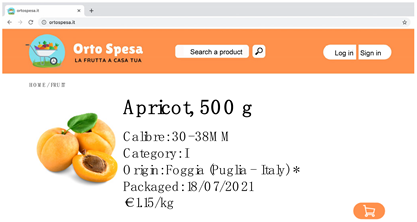 | 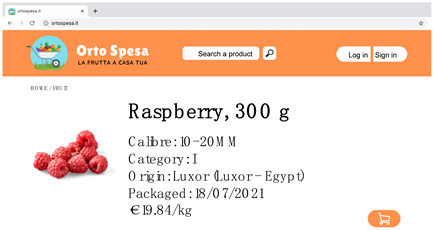 |
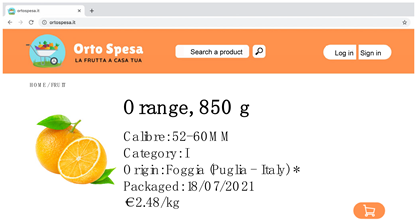 | 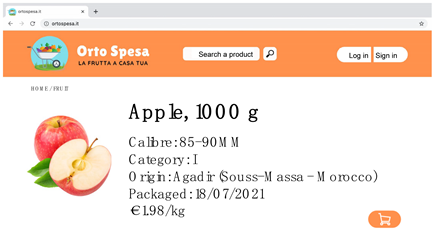 |
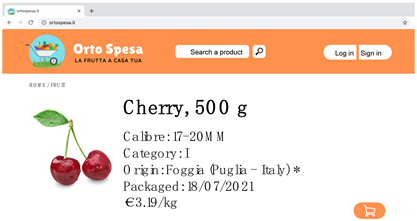 | 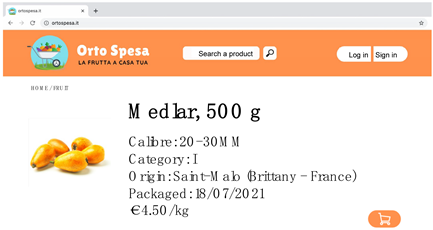 |
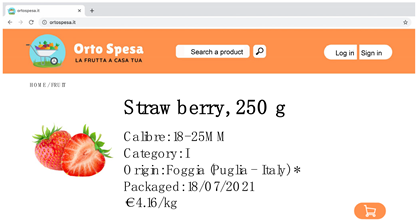 | 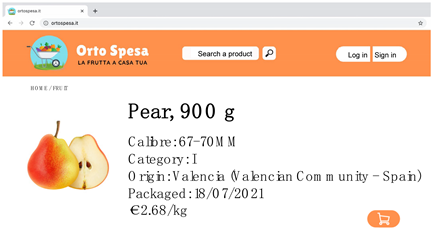 |
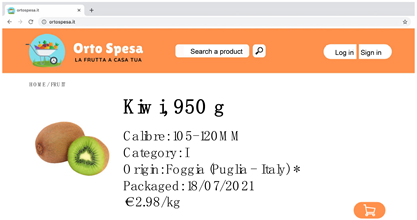 | 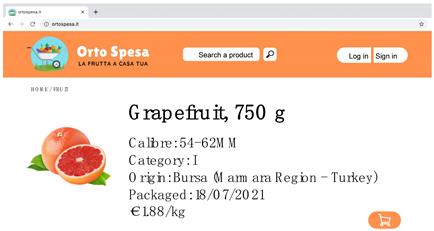 |
| Gain Message Condition | Non-Loss Message Condition | Non-Gain Message Condition | Loss Message Condition |
|---|---|---|---|
| Buying food produced in places close to us favors the survival of local agricultural varieties. If you buy local food, you contribute to the safeguard of biodiversity. | Buying food produced in places close to us avoids the disappearance of local agricultural varieties. If you buy local food, you avoid contributing to the loss of biodiversity. | Buying food produced in places far from us hinders the survival of local agricultural varieties. If you don’t buy local food, you miss the opportunity to contribute to the safeguard of biodiversity. | Buying food produced in places far from us favors the disappearance of local agricultural varieties. If you don’t buy local food, you contribute to the loss of biodiversity. |
| The presence of cultivated fields protects the green areas and the local fauna. If you buy local food, you participate in the protection of ecosystems. | The presence of cultivated fields avoids the reduction of green areas and local fauna. If you buy local food, you avoid participating in the degradation of ecosystems. | The absence of cultivated fields hinders the protection of green areas and local fauna. If you don’t buy local food, you lose the opportunity to participate in the protection of ecosystems. | The absence of cultivated fields reduces green areas and local fauna. If you don’t buy local food, you participate in the degradation of ecosystems. |
| Foods produced in places close to us travel less distance to reach our table. This reduces the consumption of fossil fuels and the emission of pollutants into the air. If you buy local food, you help maintain the purity of the air. | Foods produced in places close to us travel less distance to reach our table. This avoids the increase in the consumption of fossil fuels and the emission of pollutants into the air. If you buy local food, you avoid contributing to air pollution. | Foods produced in places far away from us travel the farthest way to reach our table. This prevents the reduction in the consumption of fossil fuels and the emission of pollutants into the air. If you don’t buy local food, you lose the opportunity to help maintain the purity of the air. | Foods produced in places far away from us travel the farthest way to reach our table. This increases the consumption of fossil fuels and the emission of pollutants into the air. If you don’t buy local food, you contribute to air pollution. |
| The presence of cultivated fields reduces the urbanization of green and agricultural areas. If you buy local food, you contribute to the increase of green areas. | The presence of cultivated fields avoids favoring the urbanization of green and agricultural areas. If you buy local food, you avoid contributing to the reduction of green areas. | The absence of cultivated fields hinders the reduction of urbanization of green and agricultural areas. If you don’t buy local food, you lose the opportunity to contribute to the increase of green areas. | The absence of cultivated fields favors the urbanization of green and agricultural areas. If you don’t buy local food, you contribute to the reduction of green areas. |
| The proximity of food production sites reduces the need to store them for a long time in refrigerators during transport. If you buy local food, you contribute to energy savings. | The proximity of the food production sites avoids increasing the need to store them for a long time in refrigerators during transport. If you buy local food, you avoid contributing to the waste of energy. | The remoteness of food production sites does not reduce the need to store them for a long time in refrigerators during transport. If you don’t buy local food, you lose the opportunity to contribute to energy savings. | The remoteness of food production sites increases the need to store them for a long time in refrigerators during transport. If you don’t buy local food, you contribute to the waste of energy. |
| The proximity between the places of production and those of sale increases the conservation of food during the distribution and storage of products. If you buy local food, you promote the reduction of food waste. | The proximity between the places of production and those of sale reduces the deterioration of food during the distribution and storage of products. If you buy local food, you avoid promoting an increase of food waste. | The distance between the places of production and those of sale reduces the conservation of food during the distribution and storage of products. If you don’t buy local food, you lose the opportunity to promote the reduction of food waste. | The distance between the places of production and those of sale increases the deterioration of food during the distribution and storage of products. If you don’t buy local food, you promote an increase of food waste. |
| The proximity of the places of production of food reduces the consumption of fossil fuels for transport and thus contributes to the stability of the earth’s temperature. If you buy local food, you contribute to the preservation of glaciers. | The proximity of food production sites reduces the consumption of fossil fuels for transport and thus avoids contributing to the rise in the earth’s temperature. If you buy local food, you avoid contributing to the melting of glaciers. | The remoteness of food production sites reduces the consumption of fossil fuels for transport and thus hinders the stability of the earth’s temperature. If you don’t buy local food, you lose the opportunity to contribute to the preservation of glaciers. | The remoteness of food production sites reduces the consumption of fossil fuels for transport and thus contributes to the rise in the earth’s temperature. If you don’t buy local food, you are contributing to the melting of glaciers. |
| The purchase of food produced in places close to us reduces the need to transport them on long journeys by ship, train or road. If you buy local food, you participate in the reduction of water pollution. | The purchase of food produced in places close to us avoids increasing the need to transport them on long journeys by ship, train or road. If you buy local food, you avoid participating in the increase in water pollution. | The purchase of food produced in places far away from us hinders the reduction of the need to transport them on long journeys by ship, train or road. If you don’t buy local food, you lose the opportunity to participate in the reduction of water pollution. | The purchase of food produced in places far away from us increases the need to transport them on long journeys by ship, train or road. If you don’t buy local food, you participate in the increase in water pollution. |
| Foods from nearby places generally derive from productions that favor the variety of crops. This promotes the regeneration of the soil. If you buy local food, you contribute to soil conservation. | Foods from nearby places generally derive from productions that favor the variety of crops. This avoids the impoverishment of the soil. If you buy local food, you avoid contributing to soil deterioration. | Foods from distant places generally derive from productions that favor monocultures. This hinders the regeneration of the soil. If you don’t buy local food, you lose the opportunity to contribute to soil conservation. | Foods from distant places generally derive from productions that favor monocultures. This favors the impoverishment of the soil. If you don’t buy local food, you are contributing to soil deterioration. |
| The shortening of the production chain reduces the washing and packaging processes, which require the use of a lot of water. If you buy local food, you contribute to save water. | The shortening of the production chain avoids the increase of washing and packaging processes, which require the use of a lot of water. If you buy local food, you avoid contributing to the waste of water. | The lengthening of the production chain hinders the reduction of washing and packaging processes, which require the use of a lot of water. If you don’t buy local food, you lose the opportunity to contribute to save water. | The lengthening of the production chain increases the washing and packaging processes, which require the use of a lot of water. If you don’t buy local food, you contribute to the waste of water. |
| The proximity of food production sites reduces the packaging required for their transport over long distances. If you buy local food, you contribute to reduce the waste that pollutes the planet. | The proximity of the food production sites avoids the increase in the packaging required for their transport over long distances. If you buy local food, you avoid contributing to the increase of waste that pollutes the planet. | The remoteness of food production sites hinders the reduction of packaging required for their transport over long distances. If you don’t buy local food, you miss the opportunity to contribute to reduce the waste that pollutes the planet. | The remoteness of food production sites increases the packaging required for their transport over long distances If you don’t buy local food, you contribute to the increase of the waste that pollutes the planet. |
| The decrease in the road traveled by the products reduces the emission of harmful substances into the atmosphere which, captured by the rain, fall back to the ground. If you buy local food, you contribute to protect the purity of rainwater. | The decrease in the road traveled by the products avoids the increase in the emission of harmful substances into the atmosphere which, captured by the rain, fall back onto the ground. If you buy local food, you avoid contributing to the acidification of rainwater. | The increase in the road traveled by products hinders the reduction of the emission of harmful substances into the atmosphere which, captured by the rain, fall back onto the ground. If you don’t buy local food, you miss the opportunity to contribute to protect the purity of rainwater. | The increase in the road traveled by the products increases the emission of harmful substances into the atmosphere which, captured by the rain, fall back onto the ground. If you don’t buy local food, you contribute to the acidification of rainwater. |
| When the places of production are close, food does not travel much way to reach the consumer. This requires less use of fossil fuels and promotes climate stability. If you buy local food, you participate in climate protection. | When the places of production are close, food does not travel much way to reach the consumer. This requires less use of fossil fuels and avoids climate change. If you buy local food, you avoid participating in the alteration of the climate. | When the places of production are far away, food travels a long way to reach the consumer. This requires increased use of fossil fuels and hampers climate stability. If you don’t buy local food, you lose the opportunity to participate in climate protection. | When the places of production are far away, food travels a long way to reach the consumer. This requires greater use of fossil fuels and favors climate change. If you don’t buy local food, you participate in the alteration of the climate. |
| The closer the production sites are, the more the emission of greenhouse gases, responsible for climate change, decreases. If you buy local food, you contribute to the reduction of climate change on Earth. | The closer the production sites are, the more we avoid the increase in the emission of greenhouse gases, responsible for climate change. If you buy local food, you avoid contributing to the increase of climate change on Earth. | The further away the production sites are, the more the reduction of greenhouse gas emissions, responsible for climate change, is prevented. If you don’t buy local food, you miss the opportunity to contribute to the reduction of climate change on Earth. | The further away the production sites are, the more the emission of greenhouse gases, responsible for climate change, increases. If you don’t buy local food, you contribute to the increase of climate change on Earth. |
Appendix B
References
- Our World in Data. Available online: https://ourworldindata.org/environmental-impacts-of-food (accessed on 10 March 2022).
- FAO. Available online: https://www.fao.org/3/ca6640en/ca6640en.pdf (accessed on 10 March 2022).
- Centro Studi Divulga. Available online: https://www.divulgastudi.it/wp-content/uploads/2021/07/Report_FM_Web_23-luglio.pdf (accessed on 10 March 2022).
- Martinez, S.; Hand, M.; Da Pra, M.; Pollack, S.; Ralston, K.; Smith, T.; Vogel, S.; Clark, S.; Lohr, L.; Low, S.; et al. Local Food Systems: Concepts, Impacts, and Issues; Economic Research Report No. 97; Department of Agriculture, U.S. Government Printing Office: Washington, DC, USA, 2010.
- Kneafsey, M.; Venn, L.; Schmutz, U.; Balázs, B.; Trenchard, L.; Eyden-Wood, T.; Boss, E.; Sutton, G.; Blackett, M. Short Food Supply Chains and Local Food Systems in the EU. A State of Play of Their Socio-Economic Characteristics; EUR 25911; Publications Office of the European Union: Luxembourg, 2013. [Google Scholar] [CrossRef]
- Shindelar, R. The ecological sustainability of local food systems. In Think Global, Eat Local: Exploring Foodways; Pimbert, M., Shindelar, R., Schölser, H., Eds.; Rachel Carson Center Perspectives: Munich, Germany, 2015; Volume 1, pp. 19–23. [Google Scholar] [CrossRef]
- Michalský, M.; Hooda, P.S. Greenhouse gas emissions of imported and locally produced fruit and vegetable commodities: A quantitative assessment. Environ. Sci. Policy 2015, 48, 32–43. [Google Scholar] [CrossRef]
- Coley, D.; Howard, M.; Winter, M. Local food, food miles and carbon emissions: A comparison of farm shop and mass distribution approaches. Food Policy 2009, 34, 150–155. [Google Scholar] [CrossRef]
- Edwards-Jones, G. Does eating local food reduce the environmental impact of food production and enhance consumer health? Proc. Nutr. Soc. 2010, 69, 582–591. [Google Scholar] [CrossRef] [PubMed] [Green Version]
- IPCC. Available online: https://www.ipcc.ch/srccl/chapter/chapter-5/ (accessed on 10 March 2022).
- Bertolotti, M.; Carfora, V.; Catellani, P. Different frames to reduce red meat intake: The moderating role of self-efficacy. Health Commun. 2020, 35, 475–482. [Google Scholar] [CrossRef]
- Cesario, J.; Corker, K.S.; Jelinek, S. A self-regulatory framework for message framing. J. Exp. Soc. Psychol. 2013, 49, 238–249. [Google Scholar] [CrossRef] [Green Version]
- Palomo-Vélez, G.; Tybur, J.M.; Van Vugt, M. Unsustainable, unhealthy, or disgusting? Comparing different persuasive messages against meat consumption. J. Environ. Psychol. 2018, 58, 63–71. [Google Scholar] [CrossRef]
- Vainio, A.; Irz, X.; Hartikainen, H. How effective are messages and their characteristics in changing behavioural intentions to substitute plant-based foods for red meat? The mediating role of prior beliefs. Appetite 2018, 125, 217–224. [Google Scholar] [CrossRef]
- Verain, M.C.; Sijtsema, S.J.; Dagevos, H.; Antonides, G. Attribute segmentation and communication effects on healthy and sustainable consumer diet intentions. Sustainability 2017, 9, 743. [Google Scholar] [CrossRef] [Green Version]
- Wolstenholme, E.; Poortinga, W.; Whitmarsh, L. Two birds, one stone: The effectiveness of health and environmental messages to reduce meat consumption and encourage pro-environmental behavioral spillover. Front. Psychol. 2020, 11, 577111. [Google Scholar] [CrossRef]
- Gifford, K.; Bernard, J.C. Influencing consumer purchase likelihood of organic food. Int. J. Consum. Stud. 2006, 30, 155–163. [Google Scholar] [CrossRef]
- Graham, T.; Abrahamse, W. Communicating the climate impacts of meat consumption: The effect of values and message framing. Glob. Environ. Chang. 2017, 44, 98–108. [Google Scholar] [CrossRef]
- Stea, S.; Pickering, G.J. Optimizing messaging to reduce red meat consumption. Environ. Commun. 2019, 13, 633–648. [Google Scholar] [CrossRef]
- Abrams, M.; Soukup, C. Matching local food messages to consumer motivators: An experiment comparing the effects of differently framed messages. J. Appl. Commun. 2017, 101, 3. [Google Scholar] [CrossRef] [Green Version]
- Chong, D.; Druckman, J.N. Framing theory. Annu. Rev. Political Sci. 2007, 10, 103–126. [Google Scholar] [CrossRef]
- Davis, J.J. The effects of message framing on response to environmental communications. J. Mass Commun. Q. 1995, 72, 285–299. [Google Scholar] [CrossRef]
- Spence, A.; Pidgeon, N. Framing and communicating climate change: The effects of distance and outcome frame manipulations. Glob. Environ. Chang. 2010, 20, 656–667. [Google Scholar] [CrossRef] [Green Version]
- Gallagher, K.M.; Updegraff, J.A. Health message framing effects on attitudes, intentions, and behavior: A meta-analytic review. Ann. Behav. Med. 2012, 43, 101–116. [Google Scholar] [CrossRef]
- Rothman, A.J.; Desmarais, K.J.; Lenne, R.L. Moving from research on message framing to principles of message matching: The use of gain-and loss-framed messages to promote healthy behavior. Adv. Motiv. Sci. 2020, 7, 43–73. [Google Scholar] [CrossRef]
- O’Keefe, D.J.; Jensen, J.D. The relative persuasiveness of gain-framed loss-framed messages for encouraging disease prevention behaviors: A meta-analytic review. J. Health Commun. 2007, 12, 623–644. [Google Scholar] [CrossRef]
- Cucchiara, C.; Kwon, S.; Ha, S. Message framing and consumer responses to organic seafood labeling. Br. Food J. 2015, 117, 1547–1563. [Google Scholar] [CrossRef]
- Morton, T.A.; Rabinovich, A.; Marshall, D.; Bretschneider, P. The future that may (or may not) come: How framing changes responses to uncertainty in climate change communications. Glob. Environ. Chang. 2011, 21, 103–109. [Google Scholar] [CrossRef]
- Van de Velde, L.; Verbeke, W.; Popp, M.; Van Huylenbroeck, G. The importance of message framing for providing information about sustainability and environmental aspects of energy. Energy Policy 2010, 38, 5541–5549. [Google Scholar] [CrossRef]
- Grazzini, L.; Rodrigo, P.; Aiello, G.; Viglia, G. Loss or gain? The role of message framing in hotel guests’ recycling behaviour. J. Sustain. Tour. 2018, 26, 1944–1966. [Google Scholar] [CrossRef]
- Hsu, C.L.; Chen, M.C. Explaining consumer attitudes and purchase intentions toward organic food: Contributions from regulatory fit and consumer characteristics. Food Qual. Prefer. 2014, 35, 6–13. [Google Scholar] [CrossRef]
- Karpinska-Krakowiak, M.; Skowron, L.; Ivanov, L. “I will start saving natural resources, only when you show me the planet as a person in danger”: The effects of message framing and anthropomorphism on pro-environmental behaviors that are viewed as effortful. Sustainability 2020, 12, 5524. [Google Scholar] [CrossRef]
- Nelson, K.M.; Bauer, M.K.; Partelow, S. Informational nudges to encourage pro-environmental behavior: Examining differences in message framing and human interaction. Front. Commun. 2021, 5, 610186. [Google Scholar] [CrossRef]
- Dijkstra, A.; Rothman, A.; Pietersma, S. The persuasive effects of framing messages on fruit and vegetable consumption according to regulatory focus theory. Psychol. Health 2011, 26, 1036–1048. [Google Scholar] [CrossRef]
- Praxmarer-Carus, S.; Wolkenstoerfer, S.; Dijkstra, A. Outcome presence and regulatory fit: Competing explanations for the advantage of gains and losses over non-gains and non-losses. J. Consum. Behav. 2021, 21, 310–327. [Google Scholar] [CrossRef]
- Bosone, L.; Martinez, F. When, how and why is loss-framing more effective than gain-and non-gain-framing in the promotion of detection behaviors? Int. Rev. Soc. Psychol. 2017, 1, 184–192. [Google Scholar] [CrossRef] [Green Version]
- Carfora, V.; Di Massimo, F.; Rastelli, R.; Catellani, P.; Piastra, M. Dialogue management in conversational agents through psychology of persuasion and machine learning. Multimed. Tools Appl. 2020, 79, 35949–35971. [Google Scholar] [CrossRef]
- Cesario, J.; Higgins, E.T.; Scholer, A.A. Regulatory fit and persuasion: Basic principles and remaining questions. Soc. Pers. Psychol. Compass 2008, 2, 444–463. [Google Scholar] [CrossRef]
- Birch, D.; Memery, J.; Kanakaratne, M.D.S. The mindful consumer: Balancing egoistic and altruistic motivations to purchase local food. J. Retail. Consum. Serv. 2018, 40, 221–228. [Google Scholar] [CrossRef]
- Vainio, A.; Niva, M.; Jallinoja, P.; Latvala, T. From beef to beans: Eating motives and the replacement of animal proteins with plant proteins among Finnish consumers. Appetite 2016, 106, 92–100. [Google Scholar] [CrossRef] [PubMed] [Green Version]
- Cerf, M.E. Sustainable development goal integration, interdependence, and implementation: The environment–economic–health nexus and universal health coverage. Glob. Chall. 2019, 3, 1900021. [Google Scholar] [CrossRef] [PubMed] [Green Version]
- Corral-Verdugo, V.; Carrus, G.; Bonnes, M.; Moser, G.; Sinha, J.B. Environmental beliefs and endorsement of sustainable development principles in water conservation: Toward a new human interdependence paradigm scale. Environ. Behav. 2008, 40, 703–725. [Google Scholar] [CrossRef]
- Verbeke, W. Profiling consumers who are ready to adopt insects as a meat substitute in a Western society. Food Qual. Prefer. 2015, 39, 147–155. [Google Scholar] [CrossRef]
- Pollard, J.; Greenwood, D.; Kirk, S.; Cade, J. Motivations for fruit and vegetable consumption in the UK Women’s Cohort Study. Pub. Health Nutr. 2002, 5, 479–486. [Google Scholar] [CrossRef]
- Williams, D.R.; Vaske, J.J. The measurement of place attachment: Validity and generalizability of a psychometric approach. For. Sci. 2003, 49, 830–840. [Google Scholar] [CrossRef]
- Godinho, C.A.; Alvarez, M.J.; Lima, M.L. Emphasizing the losses or the gains: Comparing situational and individual moderators of framed messages to promote fruit and vegetable intake. Appetite 2016, 96, 416–425. [Google Scholar] [CrossRef]
- Smerecnik, C.M.; Mesters, I.; Candel, M.J.; De Vries, H.; De Vries, N.K. Risk perception and information processing: The development and validation of a questionnaire to assess self-reported information processing. Risk Anal. 2012, 32, 54–66. [Google Scholar] [CrossRef]
- Hayes, A.F.; Preacher, K.J. Conditional process modeling: Using structural equation modeling to examine contingent causal processes. In Structural Equation Modeling: A Second Course, 2nd ed.; Hancock, G.R., Muller, R.O., Eds.; Information Age Publishing: Charlotte, CN, USA, 2013; pp. 219–266. [Google Scholar]
- McEachern, M.G.; Warnaby, G.; Carrigan, M.; Szmigin, I. Thinking locally, acting locally? Conscious consumers and farmers’ markets. J. Mark. Manag. 2010, 26, 395–412. [Google Scholar] [CrossRef]
- Sheeran, P.; Webb, T.L. The intention–behavior gap. Soc. Pers. Psychol. Compass 2016, 10, 503–518. [Google Scholar] [CrossRef]
- Carfora, V.; Caso, D.; Palumbo, F.; Conner, M. Promoting water intake. The persuasiveness of a messaging intervention based on anticipated negative affective reactions and self-monitoring. Appetite 2018, 30, 236–246. [Google Scholar] [CrossRef] [PubMed]
- Caso, D.; Carfora, V. Un intervento di messaggistica istantanea per la promozione del monitoraggio del consumo di frutta e verdura. Un intervento di messaggistica istantanea per la promozione del monitoraggio del consumo di frutta e verdura. Psicol. Della Salut. 2017, 1, 97–111. [Google Scholar] [CrossRef]
- Carfora, V.; Conner, M.; Caso, D.; Catellani, P. Rational and moral motives to reduce red and processed meat con; sumption. J. Appl. Soc. Psychol. 2020, 50, 744–755. [Google Scholar] [CrossRef]
- Carfora, V.; Cavallo, C.; Caso, D.; Del Giudice, T.; De Devitiis, B.; Viscecchia, R.; Nardone, G.; Cicia, G. Explaining consumer purchase behavior for organic milk: Including trust and green self-identity within the theory of planned behavior. Food Qual. Pref. 2019, 76, 1–9. [Google Scholar] [CrossRef]
- Cembalo, L.; Caso, D.; Carfora, V.; Caracciolo, F.; Lombardi, A.; Cicia, G. The “Land of Fires” toxic waste scandal and its effect on consumer food choices. Int. J. Env. Res. Public Health 2019, 16, 165. [Google Scholar] [CrossRef] [Green Version]
- Wolstenholme, E.; Carfora, V.; Catellani, P.; Poortinga, W.; Whitmarsh, L. Explaining intention to reduce red and processed meat in the UK and Italy using the theory of planned behaviour, meat-eater identity, and the Transtheoretical model. Appetite 2021, 166, 105467. [Google Scholar] [CrossRef]
- Carfora, V.; Pastore, M.; Catellani, P. A cognitive-emotional model to explain message framing effects: Reducing meat consumption. Front. Psychol. 2021, 12, 902. [Google Scholar] [CrossRef]
- Catellani, P.; Carfora, V.; Piastra, M. Framing and tailoring prefactual messages to reduce red meat consumption: Predicting effects through a psychology-based graphical causal model. Front. Psychol. 2022, 106, 825602. [Google Scholar] [CrossRef]
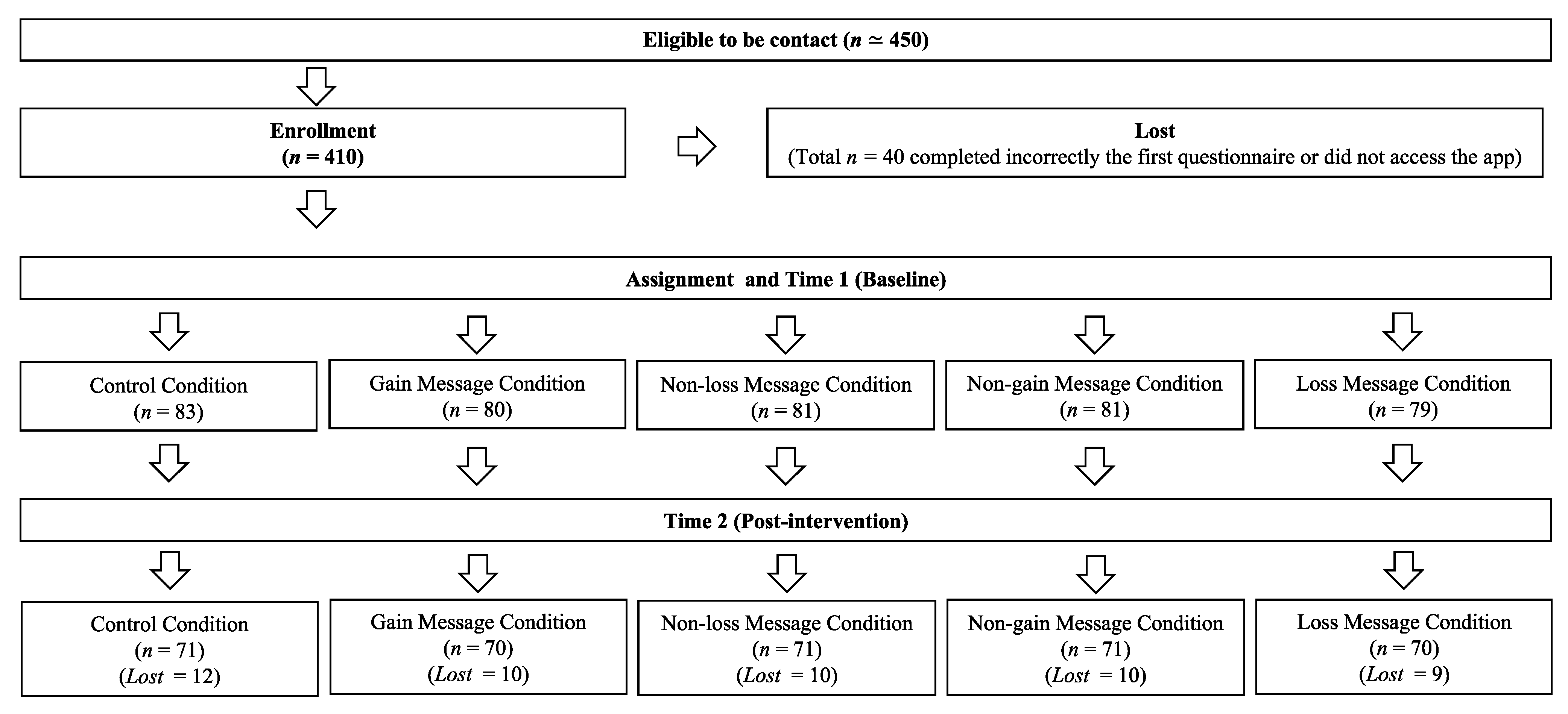
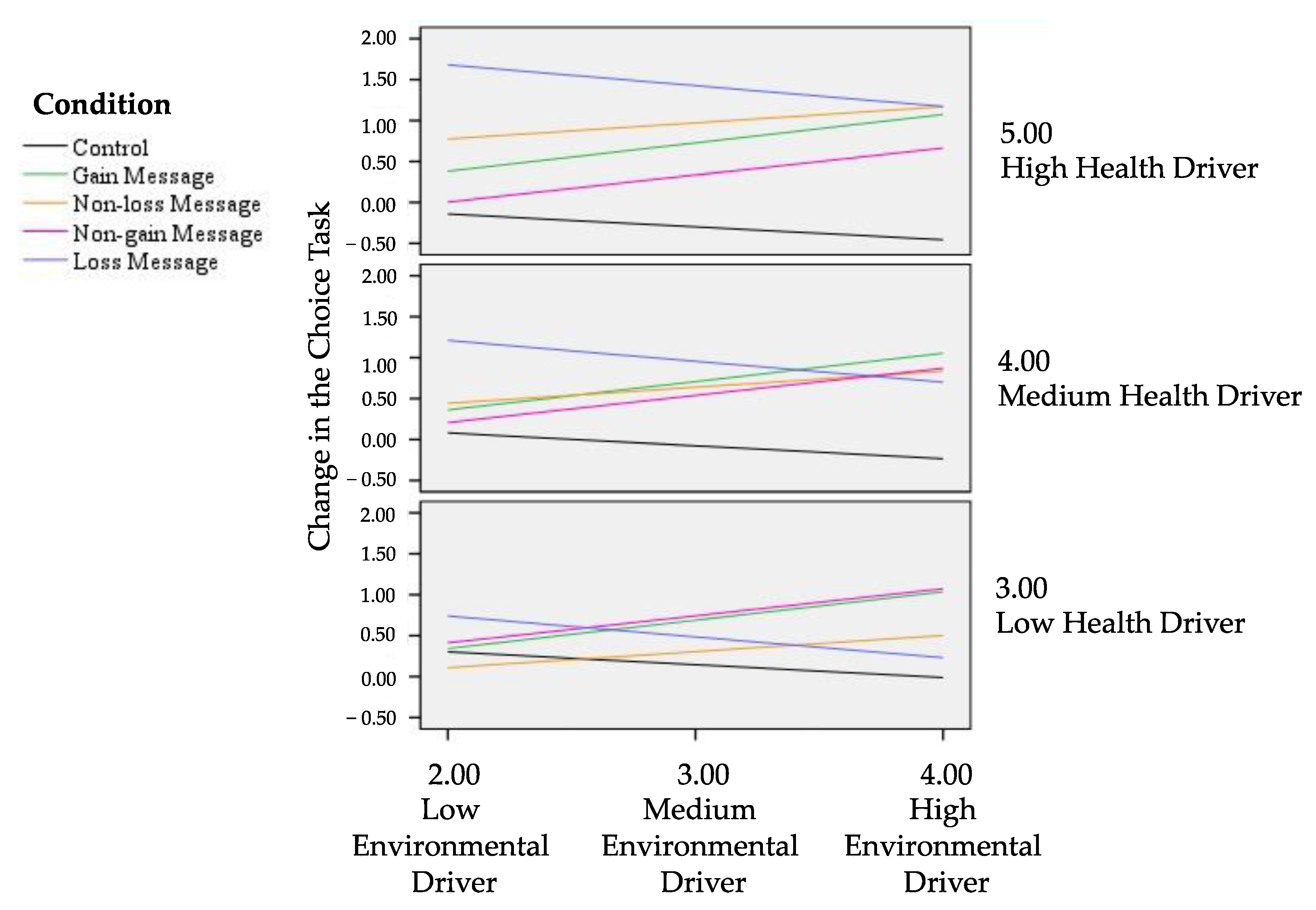
| Characteristic | Total Sample | |
|---|---|---|
| Gender | ||
| Female | 52.4% | |
| Male | 46.7% | |
| Non-binary | 0.9% | |
| Age | ||
| Young (18–24 years) | 50.7% | |
| Young Adults (25–35 years) | 34.8% | |
| Adults (35–54) | 12.5% | |
| Senior (55–65) | 2.0% | |
| M | 26.95 | |
| SD | 7.87 | |
| Education | ||
| Secondary School | 2.3% | |
| High School Diploma | 53.5% | |
| University Degree | 44.2% | |
| Marital Status | ||
| Single | 76.2% | |
| Married | 6.8% | |
| Cohabiting Couple | 14.2% | |
| Separated/Divorced | 0.3% | |
| Not declared | 2.5% | |
| Monthly Income | ||
| EUR < 1200 | 53.8% | |
| EUR 1200–2500 | 21.2% | |
| EUR > 2500 | 5.1% | |
| Not declared | 19.8% | |
| Place of Residence | ||
| Northern Italy | 51.0% | |
| Central Italy | 21.0% | |
| Southern Italy | 19.0% | |
| Islands | 9.0% | |
| Number of Residents in your Municipality | ||
| Less than 10,000 | 18.4% | |
| Between 10,000 and 30,000 | 19.0% | |
| Between 30,000 and 100,000 | 23.5% | |
| Between 100,000 and 250,000 | 10.2% | |
| Between 250,000 and 500,000 | 4.0% | |
| More than 500,000 | 24.9% |
| Control Condition (n = 71) | Gain Message Condition (n = 70) | Non-Loss Message Condition (n = 71) | Non-Gain Message Condition (n = 71) | Loss Message Condition (n = 70) | Total (N = 353) | |||||||
|---|---|---|---|---|---|---|---|---|---|---|---|---|
| Variables | M | SD | M | SD | M | SD | M | SD | M | SD | M | SD |
| Place Identity | 4.47 | 1.69 | 4.36 | 1.69 | 4.08 | 1.61 | 4.12 | 1.86 | 3.95 | 1.71 | 4.20 | 1.69 |
| Health Driver | 3.63 | 0.99 | 3.83 | 0.92 | 3.63 | 1.06 | 3.90 | 0.99 | 3.69 | 1.03 | 3.74 | 1.00 |
| Environmental Driver | 3.13 | 0.97 | 2.86 | 1.03 | 3.14 | 1.03 | 3.39 | 1.10 | 3.07 | 1.11 | 3.20 | 1.07 |
| Choice Task at Time 1 | 3.06 | 11.19 | 3.63 | 1.13 | 2.93 | 1.00 | 2.84 | 1.04 | 2.71 | 0.95 | 2.88 | 1.04 |
| Choice Task at Time 2 | 3.04 | 1.17 | 4.64 | 1.11 | 3.48 | 1.13 | 3.51 | 1.14 | 3.50 | 1.16 | 3.43 | 1.16 |
| Message Tone | - | - | 5.60 | 1.33 | 5.42 | 1.09 | 5.08 | 1.45 | 4.54 | 1.54 | 5.16 | 1.41 |
| Message Involvement | - | - | 5.52 | 0.99 | 5.16 | 1.29 | 5.32 | 1.07 | 5.32 | 1.20 | 5.33 | 1.15 |
| Message Trust | - | - | 5.33 | 0.97 | 5.18 | 1.08 | 5.18 | 1.03 | 5.24 | 1.06 | 5.23 | 1.03 |
| Systematic processing | - | - | 5.15 | 0.90 | 4.94 | 1.36 | 5.05 | 1.17 | 5.02 | 1.09 | 5.04 | 1.14 |
| 1. | 2. | 3. | 4. | 5. | 6. | 7. | 8. | 9. | |
|---|---|---|---|---|---|---|---|---|---|
| 1. Place Identity | 1 | ||||||||
| 2. Health Driver | 0.13 * | 1 | |||||||
| 3. Environmental Driver | 0.04 | 0.39 ** | 1 | ||||||
| 4. Choice Task at Time 1 | 0.08 | 0.03 | 0.07 | 1 | |||||
| 5. Choice Task at Time 2 | 0.10 | 0.16 ** | 0.20 ** | 0.26 ** | 1 | ||||
| 6. Message Tone | 0.15 * | 0.14 * | 0.21 ** | 0.02 | 0.12 * | 1 | |||
| 7. Message Involvement | 0.25 ** | 0.23 ** | 0.27 ** | 0.03 | 0.22 ** | 0.47 ** | 1 | ||
| 8. Message Trust | 0.21 ** | 0.21 ** | 0.26 ** | −0.02 | 0.15 * | 0.37 ** | 0.54 ** | 1 | |
| 9. Systematic processing | 0.17 ** | 0.29 ** | 0.34 ** | 0.02 | 0.26 ** | 0.42 ** | 0.73 ** | 0.55 ** | 1 |
| Predictor | Sum of Square | df | Mean Square | F | p | ηp2 |
|---|---|---|---|---|---|---|
| Intercept | 6994.77 | 1 | 6994.77 | 4520.53 | 0.00 | 0.93 |
| Time | 53.55 | 1 | 53.55 | 61.53 | 0.00 | 0.15 |
| Condition | 3.39 | 4 | 0.85 | 0.55 | 0.70 | 0.01 |
| Time × Condition | 15.25 | 4 | 3.81 | 4.39 | 0.00 | 0.05 |
| Error (Time) | 301.14 | 346 | 0.87 | |||
| Error (Group) | 535.38 | 346 | 1.55 |
| B | SE | t | p | 95% CI | ||
|---|---|---|---|---|---|---|
| LL | UL | |||||
| Environmental Driver | ||||||
| Gain Message Condition | 0.50 | 0.22 | 2.23 | 0.02 | 0.61 | 0.94 |
| Non-Loss Message Condition | 0.35 | 0.23 | 1.53 | 0.13 | −0.10 | 0.81 |
| Non-Gain Message Condition | 0.49 | 0.22 | 2.19 | 0.03 | 0.05 | 0.93 |
| Loss Message Condition | −0.10 | 0.23 | −0.43 | 0.67 | −0.54 | 0.35 |
| Health Driver | ||||||
| Gain Message Condition | 0.24 | 0.25 | 0.97 | 0.33 | −0.25 | 0.73 |
| Non-Loss Message Condition | 0.55 | 0.23 | 2.45 | 0.01 | 0.11 | 1.00 |
| Non-Gain Message Condition | 0.02 | 0.23 | 0.08 | 0.94 | −0.44 | 0.47 |
| Loss Message Condition | 0.69 | 0.23 | 2.98 | 0.00 | 0.23 | 1.15 |
| B | SE | t | p | 95% CI | ||
|---|---|---|---|---|---|---|
| LL | UL | |||||
| Low Environmental Driver–Low Health Driver | ||||||
| Gain Message Condition | 0.04 | 0.34 | 0.12 | 0.91 | −0.63 | 0.61 |
| Non-Loss Message Condition | −0.20 | 0.33 | −0.58 | 0.56 | −0.85 | 0.46 |
| Non-Gain Message Condition | 0.11 | 0.35 | 0.31 | 0.76 | −0.58 | 0.80 |
| Loss Message Condition | 0.44 | 0.32 | 1.35 | 0.18 | −0.20 | 1.07 |
| Low Environmental Driver–Medium Health Driver | ||||||
| Gain Message Condition | 0.28 | 0.37 | 0.76 | 0.45 | −0.45 | 1.01 |
| Non-Loss Message Condition | 0.36 | 0.37 | 0.97 | 0.33 | −0.37 | 1.09 |
| Non-Gain Message Condition | 0.13 | 0.37 | 0.34 | 0.73 | −0.60 | 0.86 |
| Loss Message Condition | 1.13 | 0.36 | 3.14 | 0.00 | 0.42 | 1.84 |
| Low Environmental Driver–High Health Driver | ||||||
| Gain Message Condition | 0.54 | 0.27 | 1.97 | 0.05 | 0.00 | 1.08 |
| Non-Loss Message Condition | 0.16 | 0.25 | 0.62 | 0.53 | −0.34 | 0.66 |
| Non-Gain Message Condition | 0.60 | 0.27 | 2.17 | 0.03 | 0.06 | 1.14 |
| Loss Message Condition | 0.34 | 0.26 | 1.30 | 0.19 | −0.17 | 0.85 |
| B | SE | t | p | 95% CI | ||
|---|---|---|---|---|---|---|
| LL | UL | |||||
| Medium Environmental Driver–Low Health Driver | ||||||
| Gain Message Condition | 0.54 | 0.27 | 1.97 | 0.05 | 0.00 | 1.08 |
| Non-Loss Message Condition | 0.16 | 0.25 | 0.62 | 0.53 | −0.34 | 0.66 |
| Non-Gain Message Condition | 0.60 | 0.27 | 2.17 | 0.03 | 0.06 | 1.14 |
| Loss Message Condition | 0.34 | 0.26 | 1.30 | 0.19 | −0.17 | 0.85 |
| Medium Environmental Driver–Medium Health Driver | ||||||
| Gain Message Condition | 0.78 | 0.24 | 3.31 | 0.00 | 0.32 | 1.25 |
| Non-Loss Message Condition | 0.71 | 0.24 | 3.01 | 0.00 | 0.25 | 1.18 |
| Non-Gain Message Condition | 0.61 | 0.24 | 2.59 | 0.01 | 0.15 | 1.08 |
| Loss Message Condition | 1.03 | 0.23 | 4.39 | 0.00 | 0.57 | 1.49 |
| Medium Environmental Driver–High Health Driver | ||||||
| Gain Message Condition | 1.02 | 0.40 | 2.56 | 0.01 | 0.24 | 1.81 |
| Non-Loss Message Condition | 1.27 | 0.39 | 3.28 | 0.00 | 0.51 | 2.03 |
| Non-Gain Message Condition | 0.63 | 0.38 | 1.66 | 0.10 | −0.11 | 1.38 |
| Loss Message Condition | 1.72 | 0.39 | 4.45 | 0.00 | 0.96 | 2.49 |
| B | SE | t | p | 95% CI | ||
|---|---|---|---|---|---|---|
| LL | UL | |||||
| Medium Environmental Driver–Low Health Driver | ||||||
| Gain Message Condition | 1.05 | 0.37 | 2.82 | 0.00 | 0.32 | 1.78 |
| Non-Loss Message Condition | 0.51 | 0.36 | 1.44 | 0.15 | −0.19 | 1.21 |
| Non-Gain Message Condition | 1.08 | 0.37 | 3.06 | 0.00 | 0.39 | 1.78 |
| Loss Message Condition | 0.24 | 0.37 | 0.66 | 0.51 | −0.48 | 0.96 |
| Medium Environmental Driver–Medium Health Driver | ||||||
| Gain Message Condition | 1.29 | 0.27 | 4.69 | 0.00 | 0.75 | 1.83 |
| Non-Loss Message Condition | 1.07 | 0.28 | 3.75 | 0.00 | 0.51 | 1.63 |
| Non-Gain Message Condition | 1.10 | 0.27 | 4.08 | 0.00 | 0.57 | 1.63 |
| Loss Message Condition | 0.93 | 0.29 | 3.23 | 0.00 | 0.36 | 1.50 |
| Medium Environmental Driver–High Health Driver | ||||||
| Gain Message Condition | 1.53 | 0.37 | 4.12 | 0.00 | 0.80 | 2.26 |
| Non-Loss Message Condition | 1.62 | 0.37 | 4.37 | 0.00 | 0.89 | 2.35 |
| Non-Gain Message Condition | 1.12 | 0.36 | 3.12 | 0.00 | 0.41 | 1.82 |
| Loss Message Condition | 1.63 | 0.37 | 4.34 | 0.00 | 0.89 | 2.36 |
| Type of Consumer | Environmental Driver | Health Driver | Best Framing | Worst Framing |
|---|---|---|---|---|
| Oppositive Consumer * | Low | Low | None | None |
| Pro-environmental Consumer | Medium | Low | Gain and non-gain | Non-loss and loss |
| Pro-environmental Consumer | High | Low | Gain and non-gain | Non-loss and loss |
| Pro-environmental Consumer | High | Medium | Gain and non-gain | None |
| Healthy Consumer | Low | Medium | Loss | Gain, non-loss, non-gain |
| Healthy Consumer | Low | High | Loss | Gain, non-loss, non-gain |
| Healthy Consumer | Medium | High | Loss | Non-gain |
| Pro-environmental and Healthy Consumer | Medium | Medium | Loss and gain | None |
| Pro-environmental and Healthy Consumer | High | High | Loss | None |
Publisher’s Note: MDPI stays neutral with regard to jurisdictional claims in published maps and institutional affiliations. |
© 2022 by the authors. Licensee MDPI, Basel, Switzerland. This article is an open access article distributed under the terms and conditions of the Creative Commons Attribution (CC BY) license (https://creativecommons.org/licenses/by/4.0/).
Share and Cite
Carfora, V.; Morandi, M.; Catellani, P. The Influence of Message Framing on Consumers’ Selection of Local Food. Foods 2022, 11, 1268. https://doi.org/10.3390/foods11091268
Carfora V, Morandi M, Catellani P. The Influence of Message Framing on Consumers’ Selection of Local Food. Foods. 2022; 11(9):1268. https://doi.org/10.3390/foods11091268
Chicago/Turabian StyleCarfora, Valentina, Maria Morandi, and Patrizia Catellani. 2022. "The Influence of Message Framing on Consumers’ Selection of Local Food" Foods 11, no. 9: 1268. https://doi.org/10.3390/foods11091268
APA StyleCarfora, V., Morandi, M., & Catellani, P. (2022). The Influence of Message Framing on Consumers’ Selection of Local Food. Foods, 11(9), 1268. https://doi.org/10.3390/foods11091268






